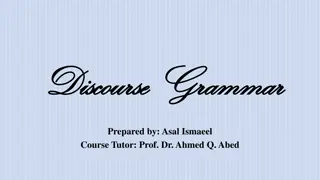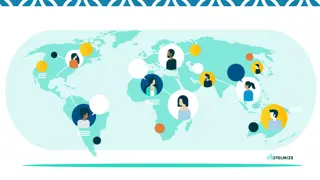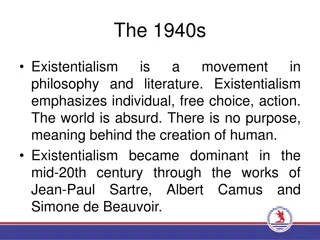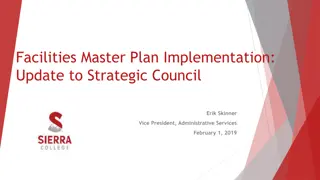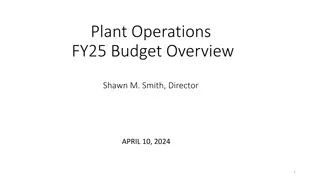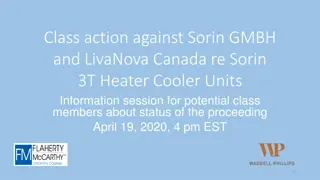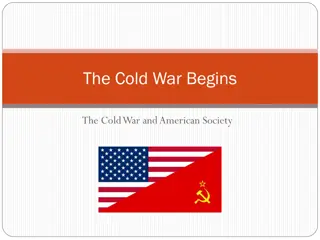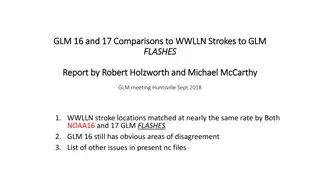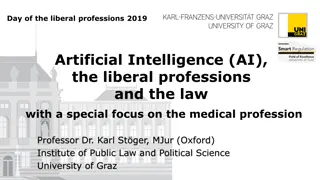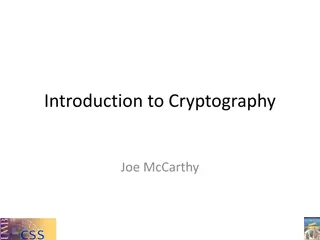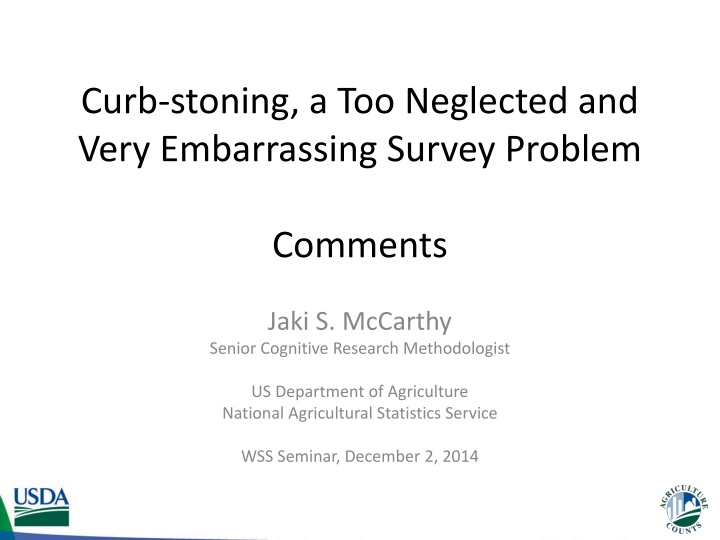
Problem of Interviewer Falsification in Surveys
Explore the challenges of curb-stoning and interviewer falsification in survey research, including insights on why interviewers falsify, potential indicators of falsification, and strategies to prevent it. Dive into the complexities of motivation, engagement, and ways to ensure accurate data collection.
Download Presentation

Please find below an Image/Link to download the presentation.
The content on the website is provided AS IS for your information and personal use only. It may not be sold, licensed, or shared on other websites without obtaining consent from the author. If you encounter any issues during the download, it is possible that the publisher has removed the file from their server.
You are allowed to download the files provided on this website for personal or commercial use, subject to the condition that they are used lawfully. All files are the property of their respective owners.
The content on the website is provided AS IS for your information and personal use only. It may not be sold, licensed, or shared on other websites without obtaining consent from the author.
E N D
Presentation Transcript
Curb-stoning, a Too Neglected and Very Embarrassing Survey Problem Comments Jaki S. McCarthy Senior Cognitive Research Methodologist US Department of Agriculture National Agricultural Statistics Service WSS Seminar, December 2, 2014
Another perspective on interviewer falsification
Why do interviewers falsify? Understanding why can: Help identify relevant measures for models Help develop strategies to prevent falsification
Falsifying to max $/min effort Most indicators have this underlying assumption (i.e. easy answers, shorter answers, rounding, etc.) Can we use data mining to identify other (less obvious) indicators?
Falsifying to Meet Deadlines Do indicators change? Maybe completion dates are important here
Other reasons to falsify? Deliberate fabrication/data misrepresentation Fatigue Perceived reduction in respondent burden Would indicators be the same?
Do these inform potential indicators/falsification model inputs? Speed indicators (length of interviews, completed interviews/day, etc.) Item nonresponse rates Edit rates Contact histories GPS tracking
How do we prevent falsification? How do we change motivation? Intrinsic versus extrinsic motivation Employee (and respondent) engagement
Extrinsic Motivation Should we pay interviewers more? How much do you have to pay to ensure data won t be falsified? Because of what they are paying me, I m going to collect the most accurate data possible.
Extrinsic Motivation Interviewers may falsify because they think no one is checking and it doesn t matter Knowing that QA procedures are in place, and work is monitored can help here Because I know they are checking my work, I m going to collect the most accurate data possible.
Intrinsic Motivation How else can we motivate interviewers? Because _____________________________, I m going to collect the most accurate data possible.
How to get interviewers invested in the process Minimize Us versus Them Supervisors/Monitors versus interviewers HQ versus field Data collectors versus data providers Value of the agency Value of the work Because __________________, I m going to collect the most accurate data possible.
This extends to respondents too! Many of the indicators would flag poor quality data provided by respondents Why do respondents want to provide good quality data? How can we improve the quality of respondents inputs? Will INTs who are good at gaining cooperation (i.e. getting cooperation from hard to reach units) look like they are collecting lower quality data?
What can we do to get the right answer in that blank? Need to invest in Training Employee engagement Communication up and down the chain Ultimate goal is to have only unintentional errors to detect
Curb-stoning as Fraud Detection Problem Advantages to this approach? Why not a classification problem? Why not score interviewers using an index of indicators? How about scoring interviews and verifying cases (not interviewers), or following up interviewers with highest percent of suspicious records? Is this an outlier detection problem?
Objective way to narrow focus How to target scarce resources But as in other fraud detection problems, likely doesn t go far enough (i.e. need to detect at much lower rates than 20% falsifiers with 70% falsification rate)
How can this method be extended? Are there other variables beyond indicators that might be useful in classifying falsifiers? Data relevant indicators (time stamps, edit rates) Person relevant indicators (INT characteristics Yes, I realize we are getting into dicey territory!) This would require real data i.e. cannot be done with simulated data


